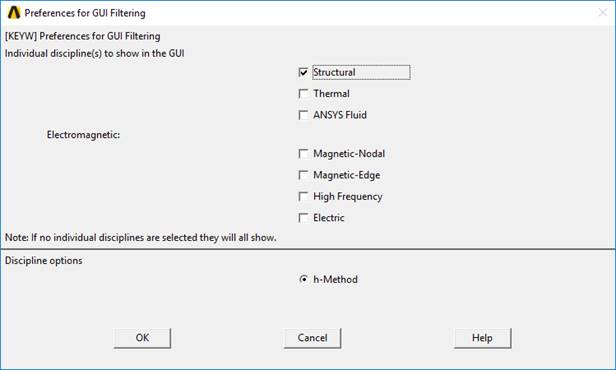

- #Command documentation ansys 15 how to#
- #Command documentation ansys 15 serial#
- #Command documentation ansys 15 download#
#Command documentation ansys 15 download#
Download the fluent submit script template here: fluent-submit-2021R2.sh.
#Command documentation ansys 15 how to#
See "How to Make an ANSYS Journal File" for more information on how to make a journal file. At the end of this, you should have: case file (*.cas), data file (*.dat), and also make a journal file (*.jou).

#SBATCH -L -b -dis -mpi ibmmpi -np $ -i ansys.in Starting from September 15, 2015, a job using HPC tokens (with " ansyspar" flag) should be submitted to Owens clusters due to scheduler issue.įor distributed ANSYS Mechanical jobs, the number of processors needs to be specified in the command line with options '-dis -np': Note that you'll need to change your batch script slightly for distributed runs. To take advantage of the powerful compute resources at OSC, you may choose to run distributed ANSYS Mechanical for large problems. Multiple nodes and cores can be requested to accelerate the solution time. In order to run it via the batch system, submit the job.txt file with the command: qsub job.txt.
#Command documentation ansys 15 serial#
You can create the batch script using any text editor you like in a working directory on the system of your choice. For a given model, prepare the input file with ANSYS Mechanical commands (named ansys.in for example) for the batch run. Below is the example batch script ( job.txt ) for a serial run: Once the job is started, you're automatically logged in on the compute node and you can launch ANSYS Mechanical and start the graphic interface with the following commands:Ī batch script can be created and submitted for a serial or parallel run. You may adjust the numbers per your need. This job will queue until resources becomes available. To run interactive ANSYS Mechanical, a batch job need to be submitted from the login node, to request necessary compute resources, with X11 forwarding. For example, the following command requests one whole node with 28 cores ( -N 1 -n 28 ), for a walltime of 1 hour ( -t 1:00:00 ), with one ANSYS license: Once developed this input file can then be run in no-interactive batch mode. Interactive mode is similar to running ANSYS Mechanical on a desktop machine in that the graphical user interface will be sent from OSC and displayed on the local machine. Interactive jobs are run on compute nodes of the cluster, by turning on X11 forwarding. The intention is that users can run ANSYS Mechanical interactively for the purpose of building their model and preparing their input file. It is desirable for big problems since more resources can be used. Batch jobs run on the compute nodes of the system and not on the login node. Refer to Queues and Reservations and Batch Limit Rules for more info. To gain access to the mutiple processors in the computing environment, you must submit your ANSYS Mechanical analysis to the batch system for execution. Batch jobs can request mutiple nodes/cores and compute time up to the limits of the OSC systems. When you log into you are actually logged into a linux box referred to as the login node. The ANSYS Mechanical parameter that is to be assigned a value should be given on the command line with a preceding dash (-), a space immediately after, and the value immediately after the space:

The parameter must be at least two characters long and must be a legal parameter name. It specifies that the ANSYS graphical user interface started automatically.ĪNSYS Mechanical parameters may be assigned values on the command. Conversely, the -s argument with the -b batch argument forces the reading of the start-up file during batch execution.

The noread option of the -s argument specifies that the start-up file is not to be read, even during an interactive session. These defaults may be changed with the -s command line argument. By default, the start-up file is read during an interactive session and not read during batch execution. It specifies that no user input is expected (batch execution). This is calculated for you if you use ansnqs to construct an NQS request. The memory requirement for the entire execution will be approximately 5300000 words more than the -m specification. It specifies the amount of working storage obtained from the system. The value can be X11, x11, X11C, x11c, or 3D. The default is the name of the input file. It specifies the "job id," which determines the naming of output files. The ANSYS Mechanical command takes a number of Unix-style switches and parameters. Following a successful loading of the ANSYS module, you can access the ANSYS Mechanical commands and utility programs located in your execution path:


 0 kommentar(er)
0 kommentar(er)
